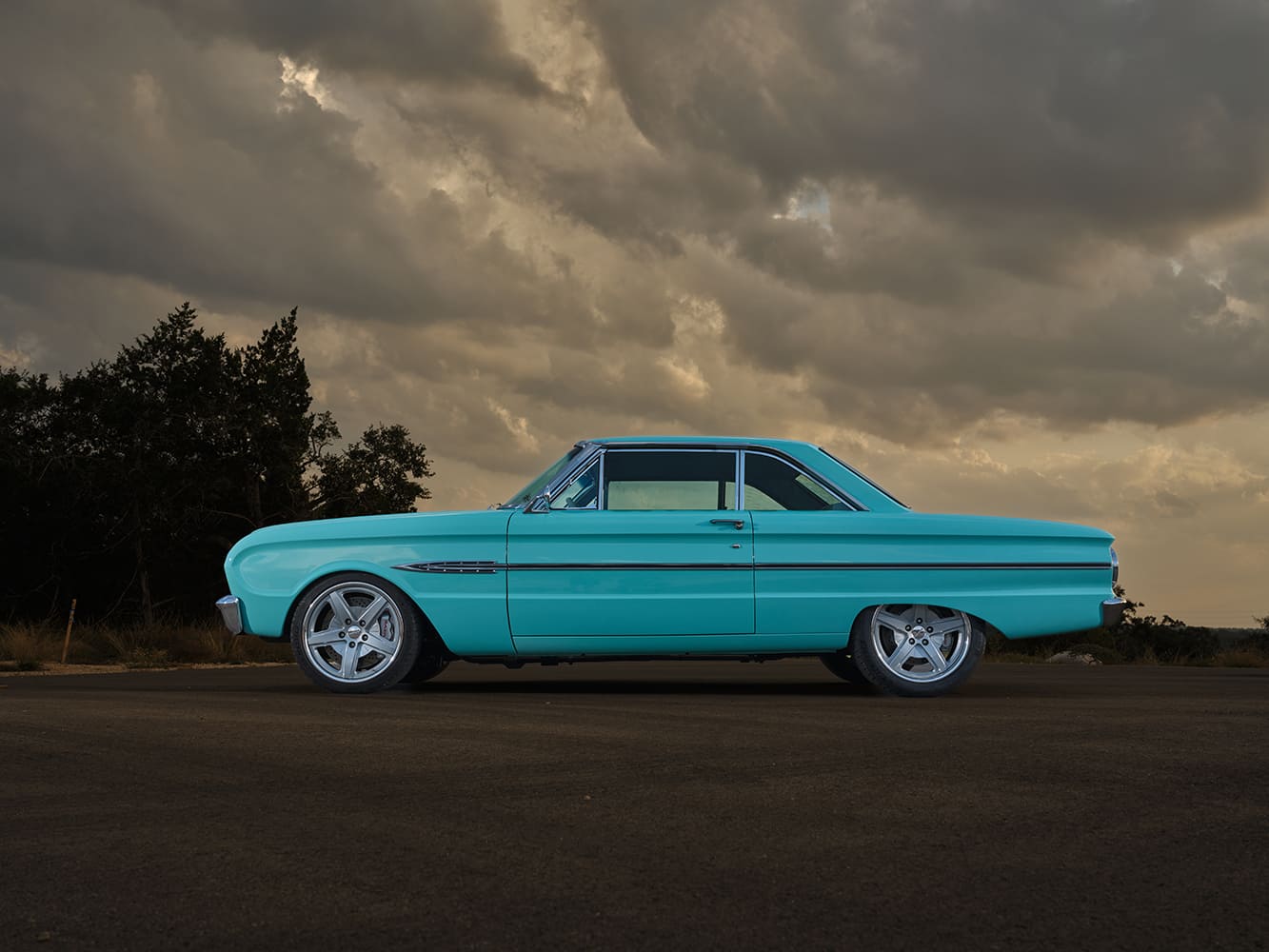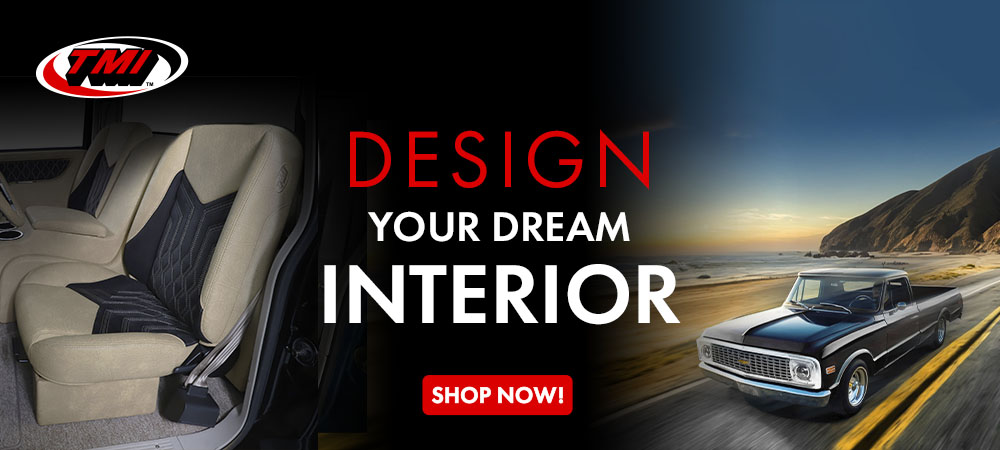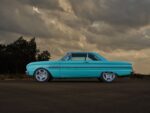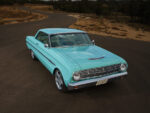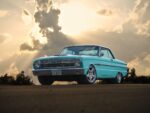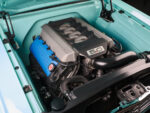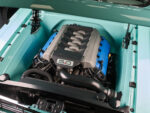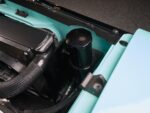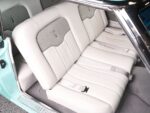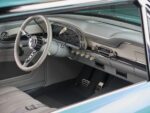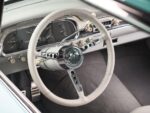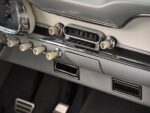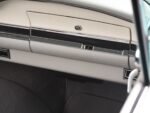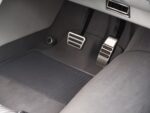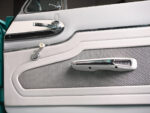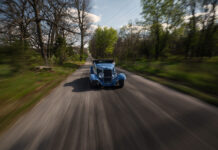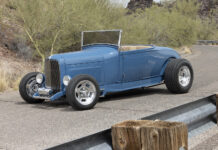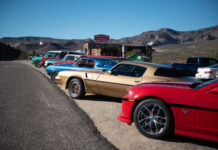By Brian Brennan – Photography By NotStock Photography
Midway through the model year, in February 1963, Ford made waves by offering the Fairlane’s robust 164hp “Challenger” 260-cid V-8 engine for the first time in the Falcon lineup, sparking excitement among performance enthusiasts. However, Grant Smith’s Falcon didn’t start there; it had to come a long way to reach its current standard.
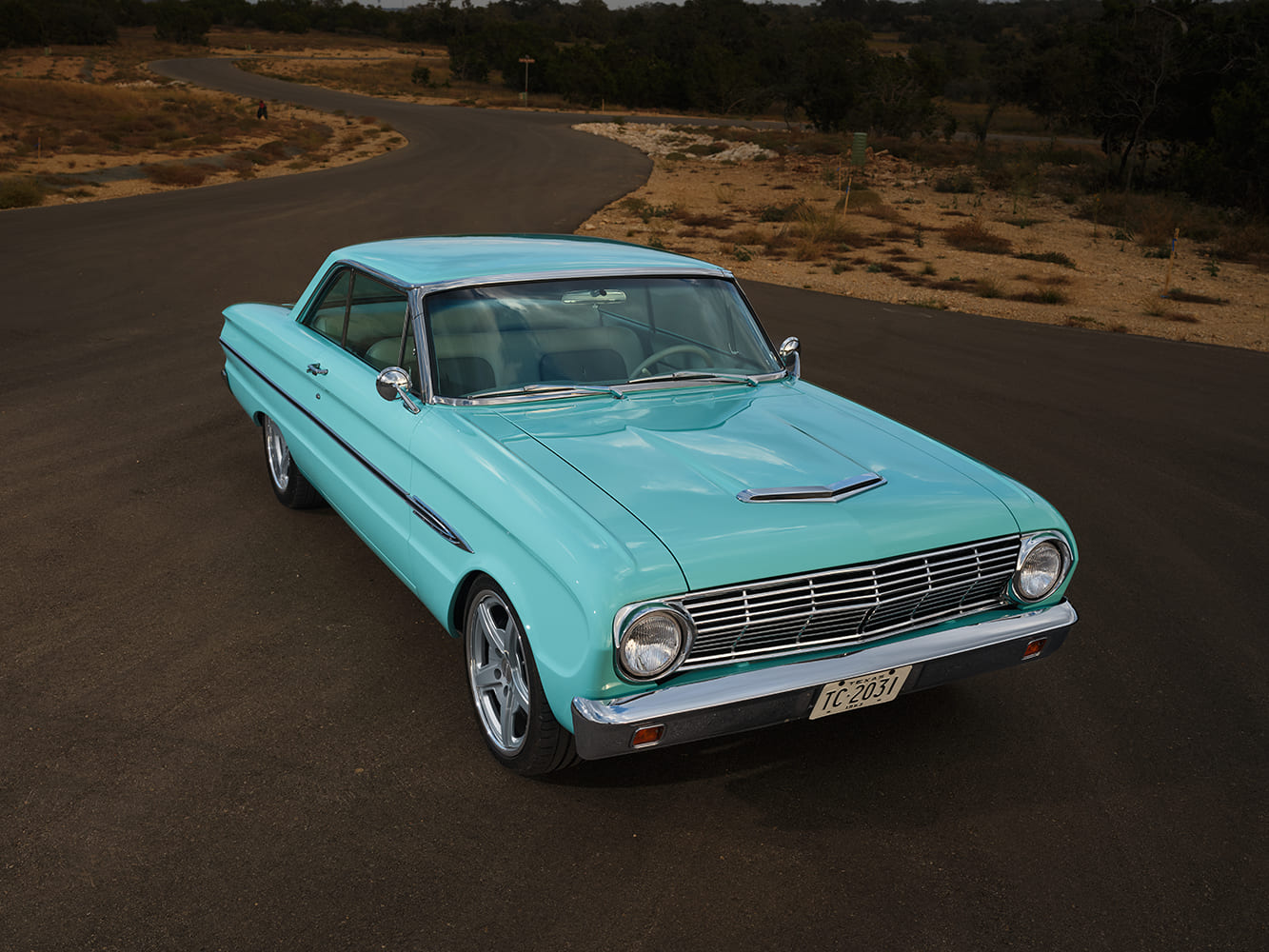
The 1963-1/2 model year marked a historic moment for the Falcon. The 1963-1/2 Falcon Sprint models, including the two-door hardtop (10,479 units produced) and convertible (4,602 units produced), were the first Falcons offering the V-8 option. These first-generation Falcon Sprint cars laid the groundwork for the much-anticipated 1964-1/2 Ford Mustang.
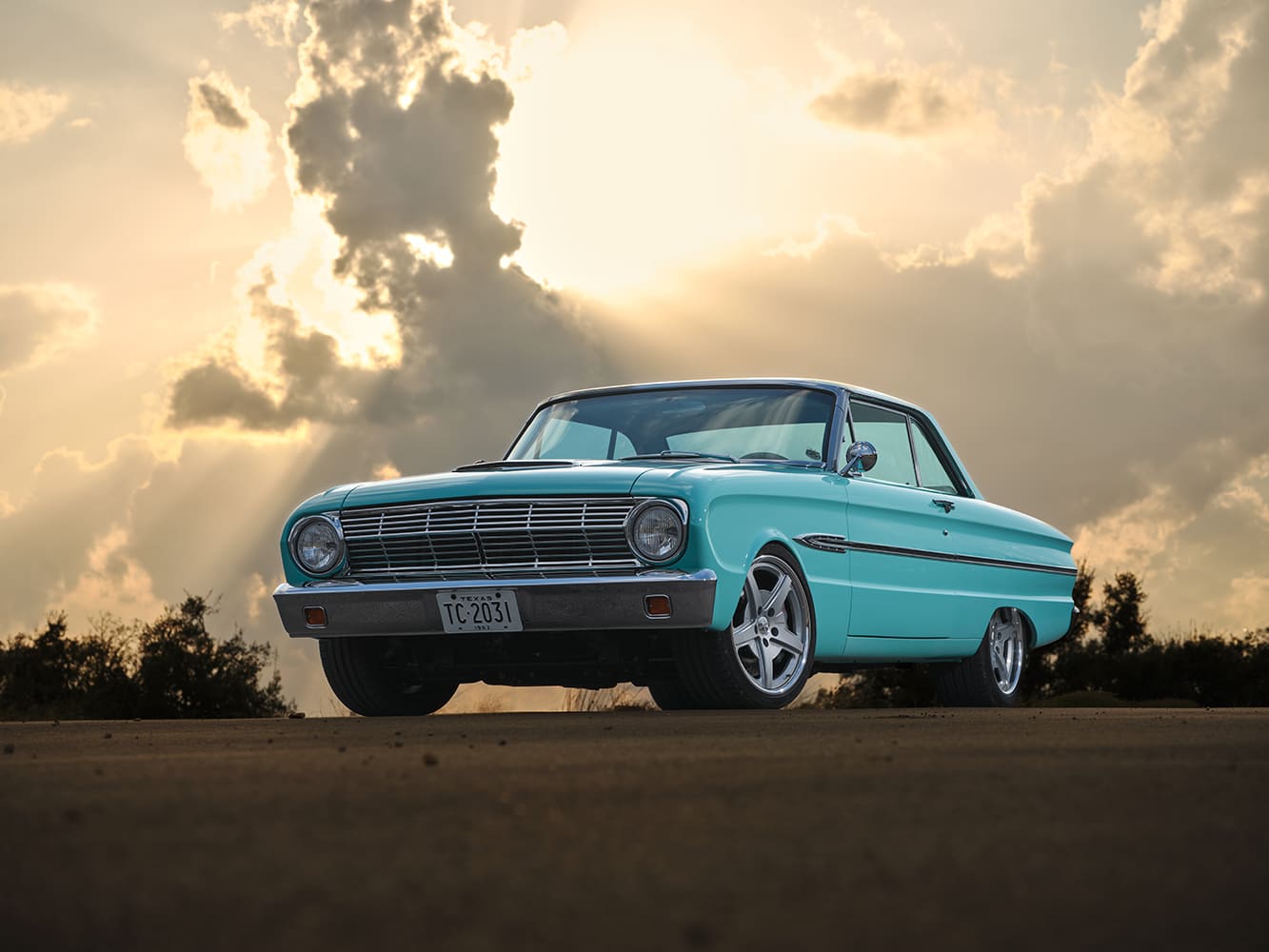
Grant’s 1963 Ford Falcon was once far from suitable sheetmetal, but the idea was there. That’s where Brian Cruz and his craftsmen at Cruzer’s Customs (CC) took on the challenge.
Grant thought his 1963 Ford Falcon would be a good place to start, but upon further examination, that was not the case. Much more work was needed, as the sheetmetal was in poor condition. The build would take eight years, which is not an uncommon path for many hot rodders. The Falcon ended up at CC with Cruz. While at CC, it became apparent that a significant amount of the sheetmetal had to be replaced. To achieve this, a donor car, also a common strategy among hot rodders, was needed to make the required sheetmetal readily accessible.
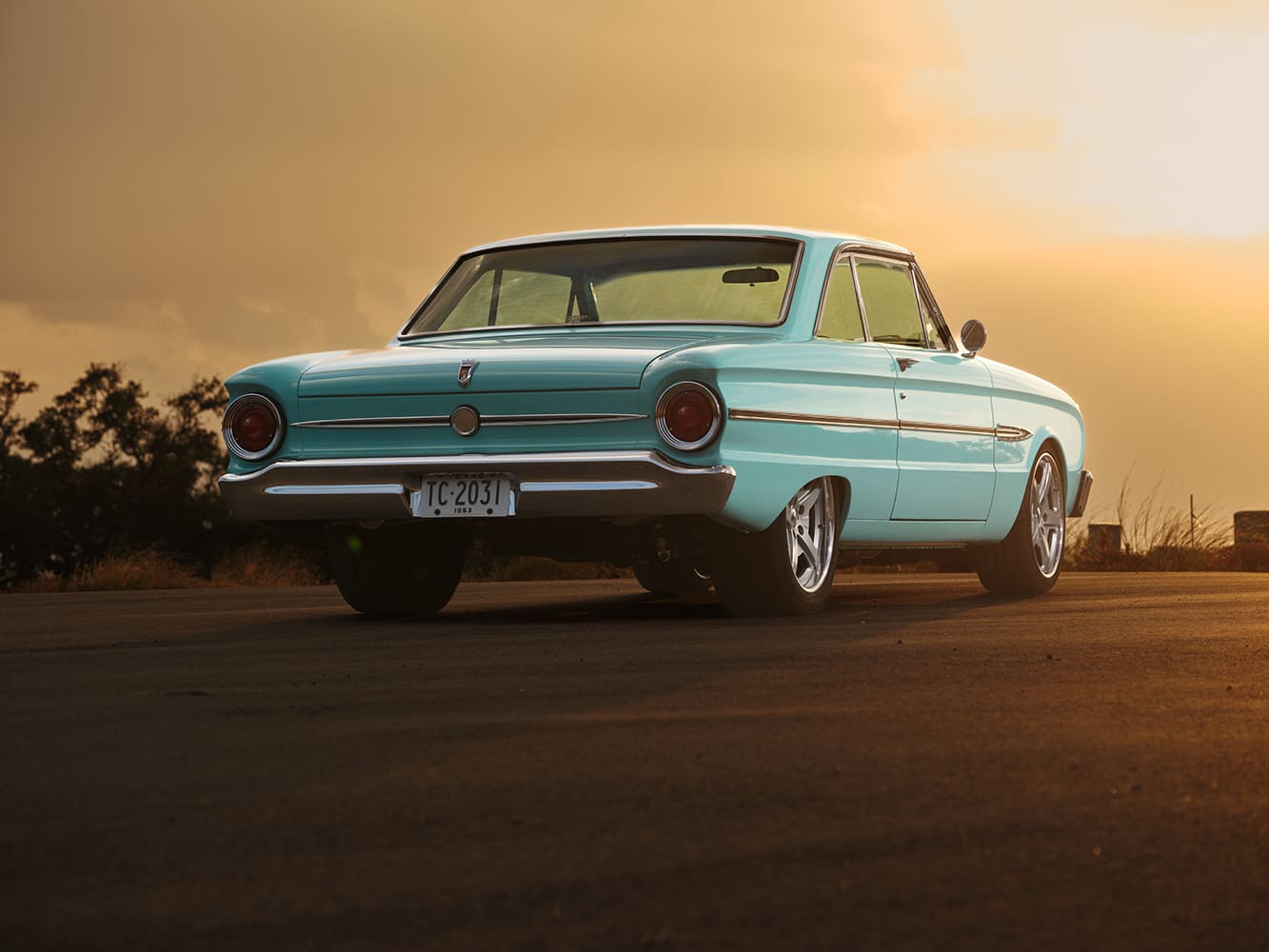
The Falcon’s body has also undergone numerous refinements, including a shaved cowl vent, reshaped bumpers tucked closer to the body, and 4-inch-wider rear wheeltubs. Holley LED headlights and digital taillights are in place. When we asked Smith about the paint, he told us an interesting story about the color selection.

Grant tells us, “My wife chose the color. After weeks of looking for the correct shade, the Seafoam Green was taken from a Post-it note from the Office Depot. [Cruz’s] crew did an excellent job of matching the color exactly.”
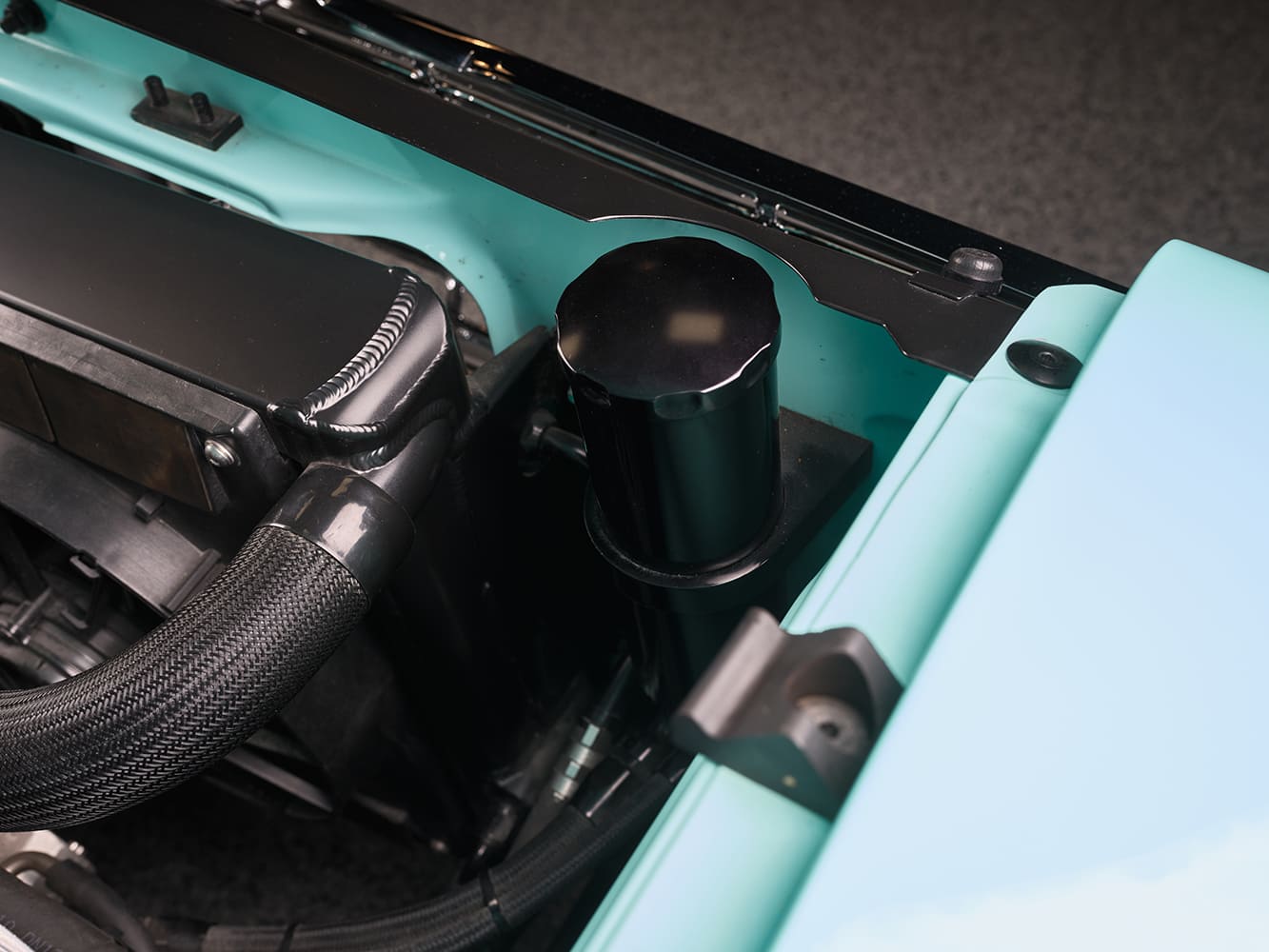
The crew at Cruzer’s expertly handled the bodywork and then applied the BASF two-stage basecoat/clearcoat paint in a period-appropriate color. While replacing the extensive sheetmetal was formidable, the suspension underwent significant upgrades. CC modified the stock chassis to accommodate the Roadster Shop front clip.
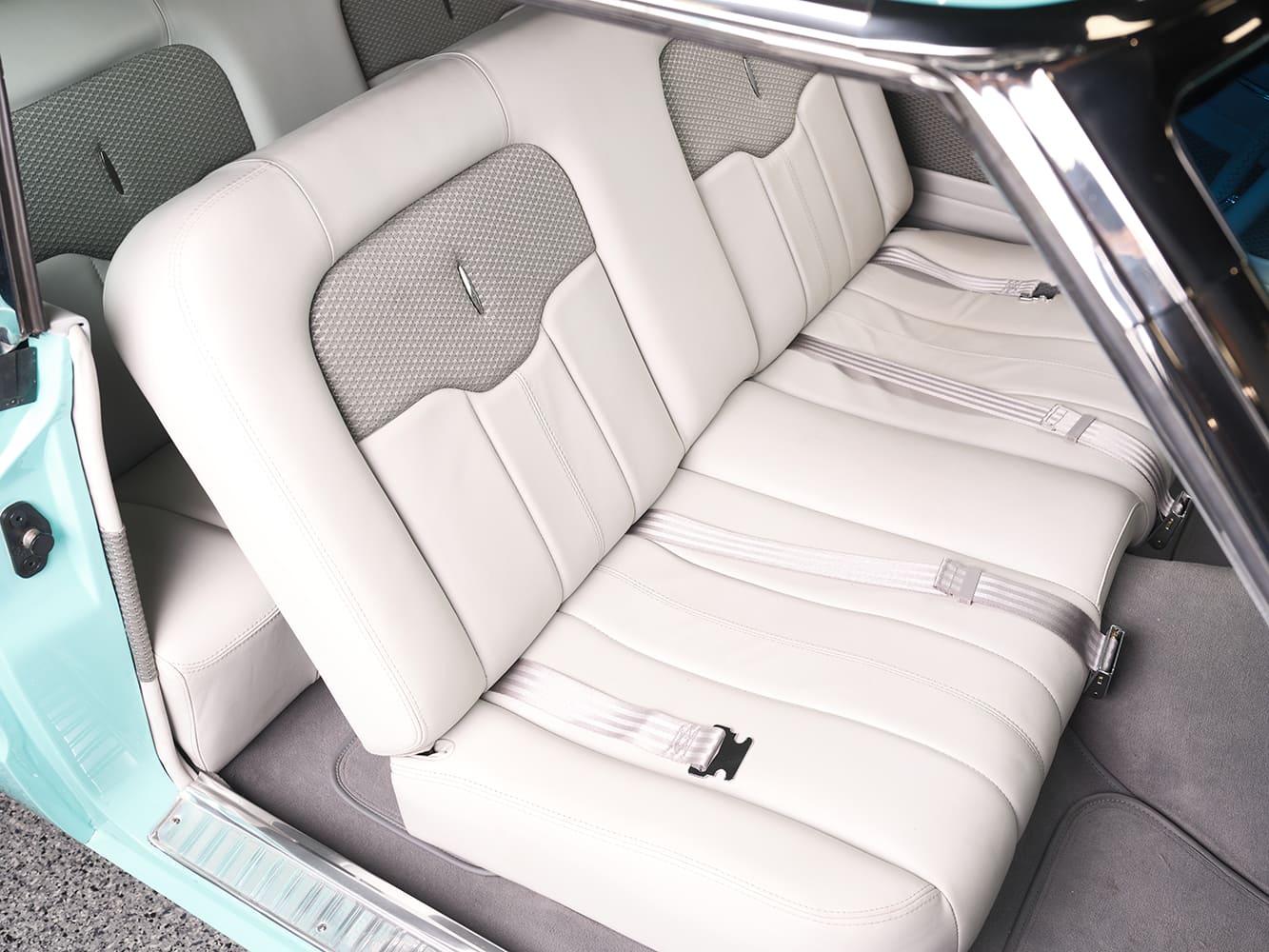
CC crafted a custom front suspension featuring rack-and-pinion steering that works with C6 spindles, coilover shocks, and an RS splined front sway bar. The rear suspension is based around a Ford 9-inch with a Gear FX 3.50 ratio ring-and-pinion, equipped with 31-spline axles. It is supported by a Ridetech triangulated four-link system paired with two additional coilover shocks. Handling the power rearward is a 4-inch-diameter aluminum driveshaft.

Stopping power is managed by 13- and 14-inch Baer drilled-and-slotted rotors with Baer calipers behind Forgeline wheels wrapped in Michelin tires. The Falcon’s striking appearance is further enhanced by stunning Forgeline forged three-piece Rodster wheels, in sizes 18×5.5 and 18×9.5. These wheels feature a sleek finish with Hyper Silver and Diamond Cut centers, complemented by polished outer lips and center caps that add an elegant touch. The Pilot Sport 4 S high-performance rubber represents the Michelin rubber, measuring 245/35R18 in front and 265/40R18 in back. The Pilot Sport 4 S was engineered from endurance racing technology and delivers exceptional dry grip and outstanding wet braking performance.
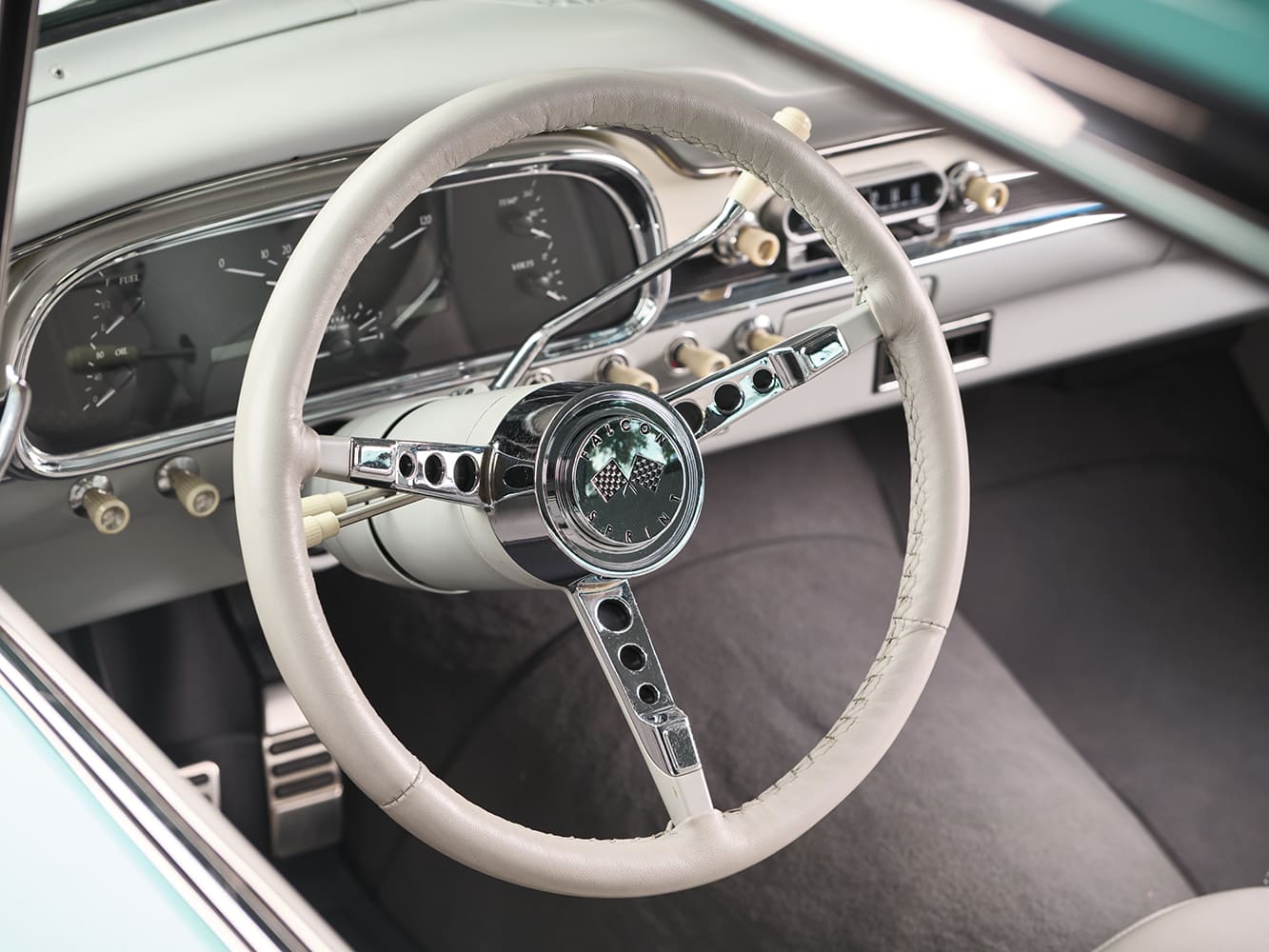
The 5.0L Ford Performance Coyote delivers 450 hp and features an aluminum block and heads, breathing through a custom intake system designed and fabricated by the CC team built on top of a factory EFI system utilizing MSD plug wires and an XS battery. To expel the spent gases, a set of Ultimate headers with 1-7/8-inch primary tubes is used, eventually connecting to a custom exhaust system made from stainless steel 2-1/2-inch pipes that lead to a pair of MagnaFlow mufflers. The entire exhaust system is largely CC’s handiwork. A Vintage Air Front Runner serpentine belt system manages the accessory drive for the A/C, water pump, power steering, and charging system. At the same time, the cooling combo is provided by C&R Radiator, including the radiator and a separate transmission cooler. Additional engine accessories include the SPAL electric fan, a Mechman alternator, and a factory starter. A Bowler Performance Transmissions–prepped 4R70W overdrive automatic with a 2,400-rpm stall speed converter transmits all this power to the rear, while an Ididit column-shift mounted lever handles the gear selection.
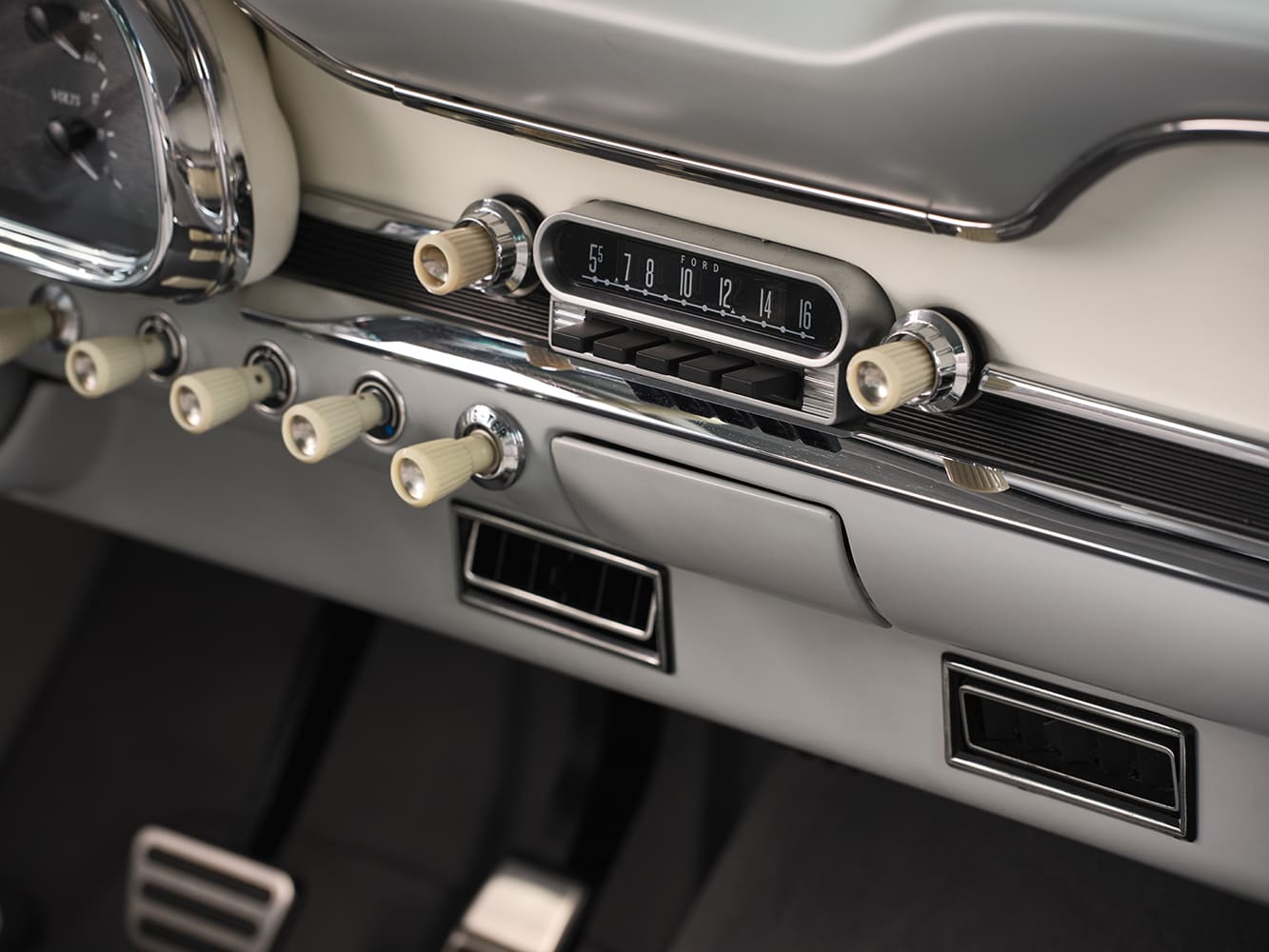
The Falcon’s factory dashboard is retained and painted light gray and off-white. From here, a Dakota Digital instrument cluster is utilized. The shortened Ididit steering column with column shift and an EVOD steering wheel are now attached to the dashboard. Note the column was shortened to accommodate the demands within the engine compartment. A new subpanel houses the A/C vents, while the A/C controls are mounted in the dash alongside the standard factory controls. There is also the genuine factory push-button AM radio.
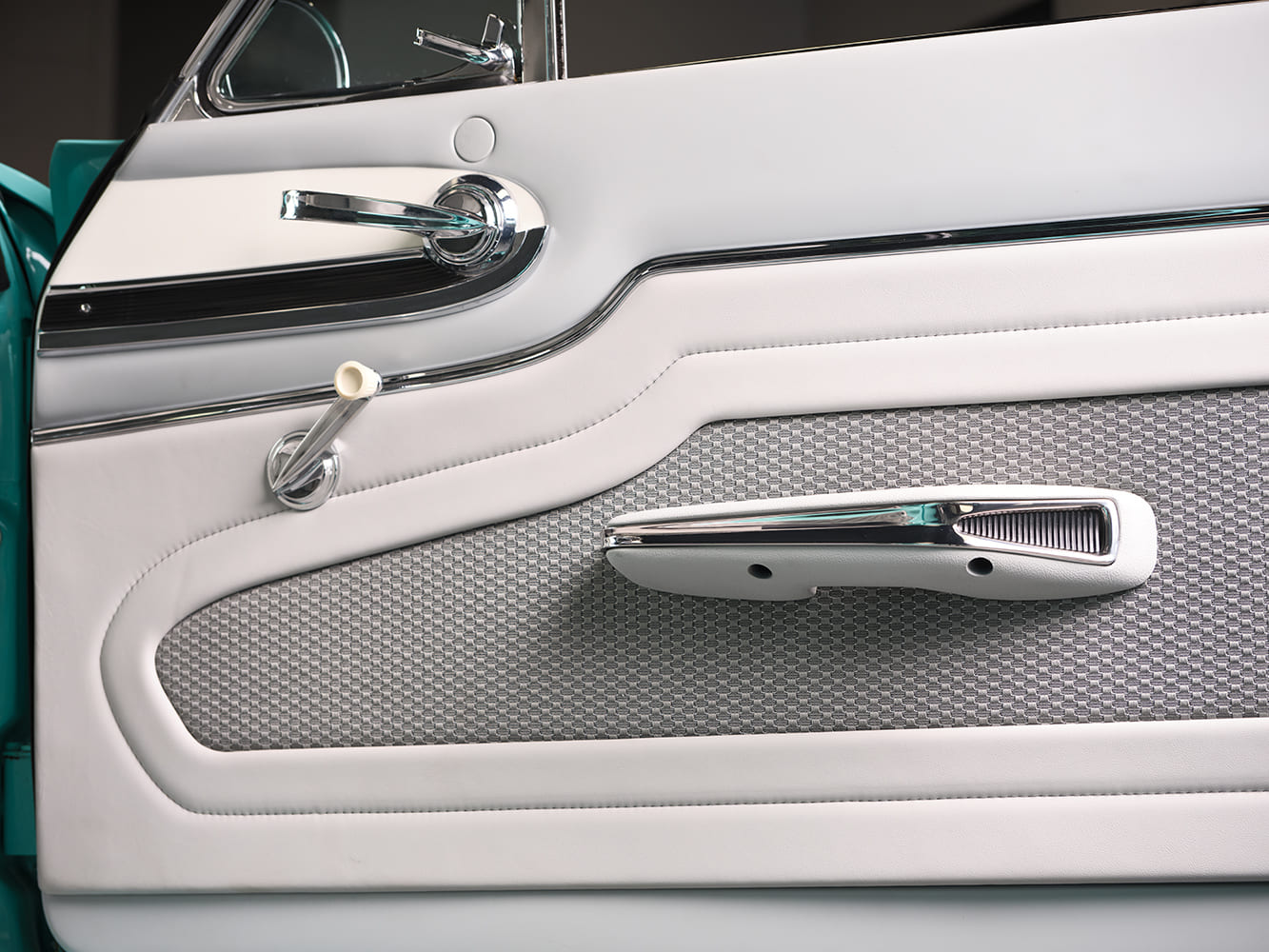
An American Autowire kit, installed at CC, accommodates all the electrics. The front bench seat is sourced from Snowden Custom Seats, and the rear seat is reworked, both covered in Moore & Giles leather and a light gray provided by Gabriel and Son Upholstery Shop. The carpeting features the ubiquitous German square weave. The necessary brightwork for interior and exterior comes courtesy of Advanced Plating.
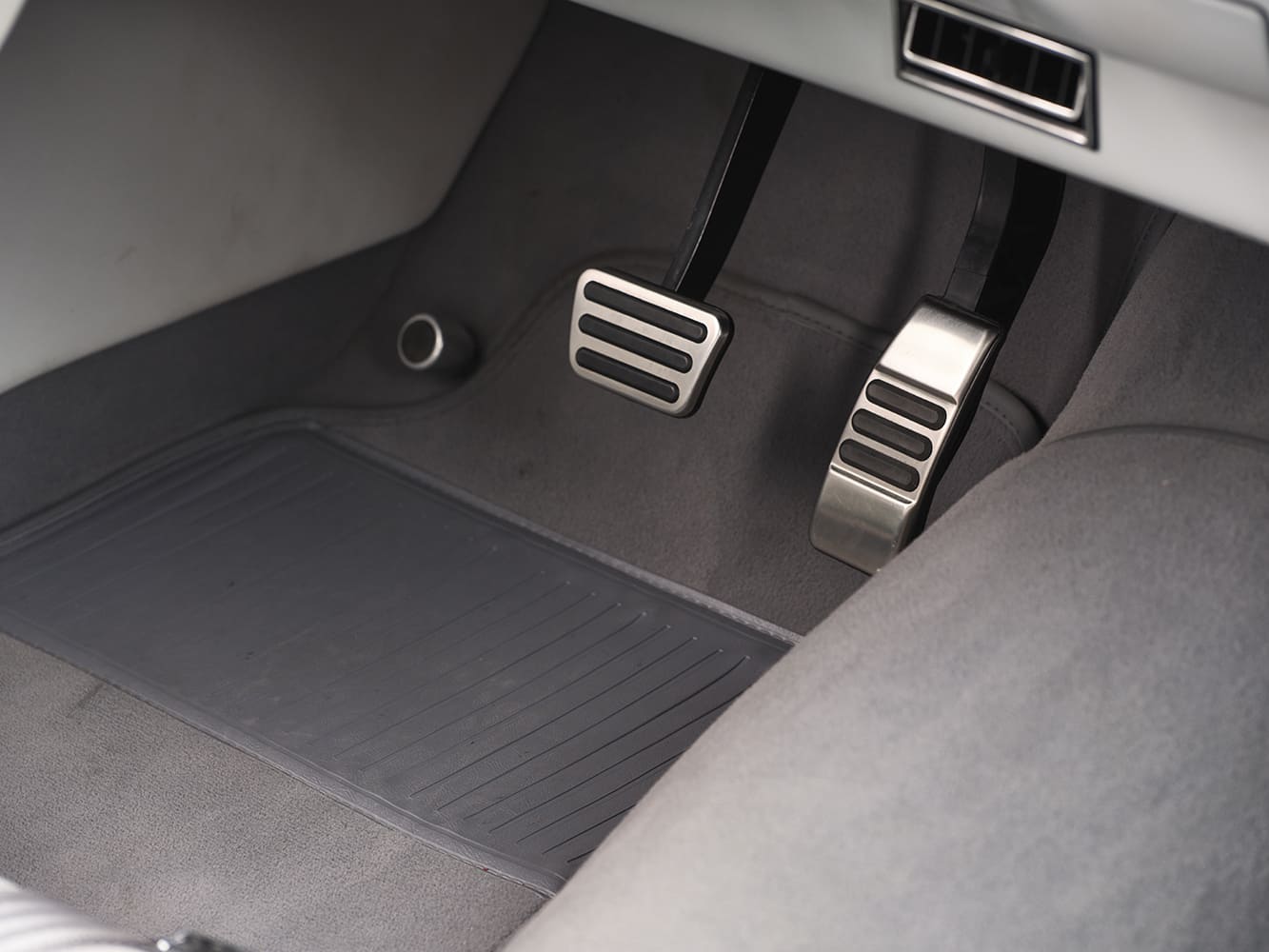
Grant Smith’s Falcon has transformed from a rusty shell into a stunning showcase of performance, style, and craftsmanship, making it a true standout on the road.
-MR
Check out this story in our digital edition here.











